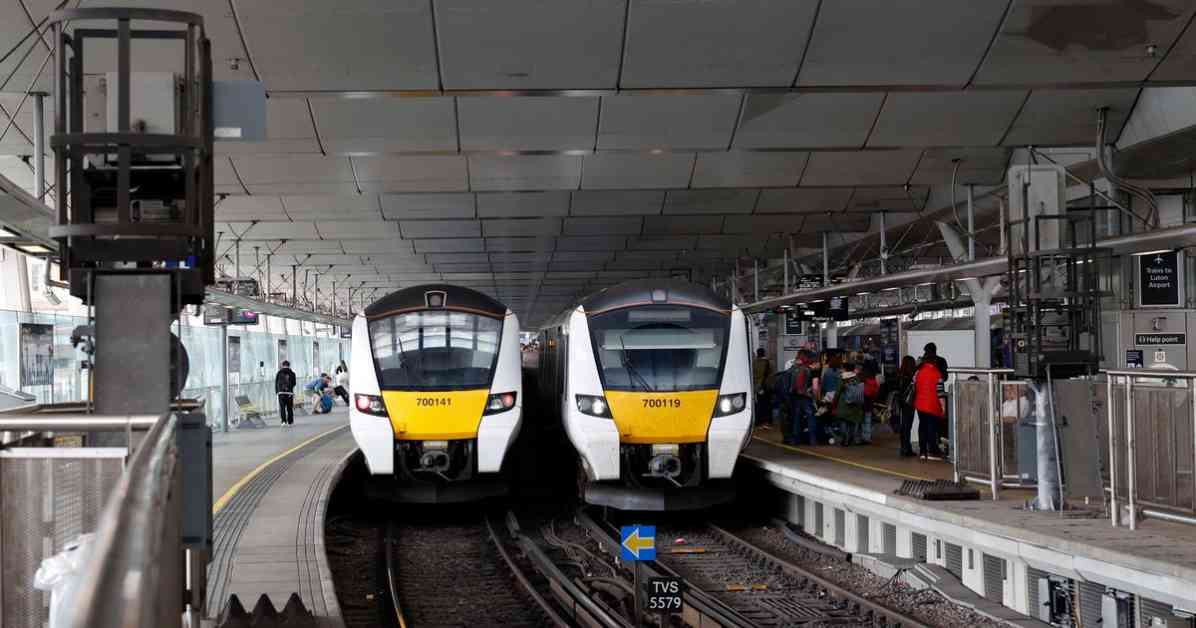Thameslink Trains Cancelled: Major Disruption Until End of Day
Summary: A track circuit failure in the London Blackfriars station area has caused significant disruptions to Thameslink train services. The signalling system, which relies on track circuits to detect train positions, is currently experiencing issues that are impacting the safe passage of trains.
The bustling London Blackfriars station, a hub for Thameslink train services, found itself at the center of a major disruption recently. The culprit? A track circuit failure that threw a wrench into the smooth operation of the signalling system. This vital component, responsible for detecting the positions of trains, plays a crucial role in ensuring the safe and efficient movement of rail traffic. However, when these track circuits encounter issues, chaos ensues for both passengers and railway staff alike.
The Significance of Track Circuits in Railway Operations
Track circuits are the unsung heroes of the railway industry, silently working behind the scenes to keep trains running on schedule. These ingenious devices serve as the eyes and ears of the signalling system, constantly monitoring the presence of trains on the tracks. When a track circuit fails, as in the case of the recent incident at London Blackfriars station, the repercussions ripple throughout the entire network.
Imagine a scenario where a track circuit mistakenly detects a phantom train that isn’t actually there. This false signal triggers the signalling system to halt all incoming trains, forcing drivers to come to a standstill at red stop signals. Only with a verbal command from the signaller are they permitted to proceed, albeit at a snail’s pace to ensure they can stop on a dime if needed. The result? Delays, frustration, and a domino effect that impacts every journey along the affected route.
Uncovering the Root Causes of Track Circuit Failures
The mysterious world of track circuit failures is a complex one, with a myriad of potential causes lurking beneath the surface. From electronic glitches to physical obstructions on the tracks, these faults can arise unexpectedly and wreak havoc on the smooth operation of the railway network. As passengers grumble about delayed trains and missed connections, behind the scenes, Network Rail’s dedicated staff are working tirelessly to pinpoint the source of the issue and restore normalcy to the system.
Network Rail, the guardians of the signalling system, are on the case, deploying their team of experts to investigate the track circuit failure at London Blackfriars station. With precision and efficiency, they are combing through the intricate web of signals and circuits, determined to uncover the root cause of the disruption. As they race against the clock to resolve the issue, passengers and rail enthusiasts alike hold their breath, hoping for a swift resolution to the chaos that has engulfed their daily commute.
In the fast-paced world of railway operations, where every minute counts, a track circuit failure is more than just a technical glitch – it’s a reminder of the delicate balance that keeps our trains running smoothly. As the sun sets on another day of disruptions, the dedicated teams at Network Rail continue their relentless pursuit of a solution, knowing that with every obstacle overcome, the rails will once again hum with the familiar rhythm of a well-oiled machine.












